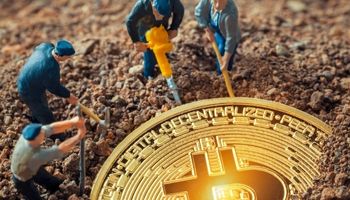
- Post by Dan Bramwell
- 0 Comments
Unveiling the World of Crypto Mining: Digging into the Digital Gold Rush
In the ever-evolving landscape of digital currencies, one term that frequently surfaces is "crypto mining." But what exactly does it entail, and why is it often referred to as the digital gold rush? Let's delve into the intricacies of crypto mining and unlock the mysteries behind this fascinating process.
What is Crypto Mining?
At its core, crypto mining is the process by which new units of a cryptocurrency are created and transactions are added to the blockchain. This process involves solving complex mathematical puzzles that validate and secure transactions on the network. In return for their computational efforts, miners are rewarded with newly minted cryptocurrency coins.
The Digital Gold Rush Analogy
Why the comparison to the gold rush? Well, much like the 19th-century gold rush where individuals flocked to find and extract gold, crypto mining involves a race to solve mathematical problems and be the first to validate transactions. The "reward" in this case is the cryptocurrency itself, often referred to as the digital gold.
How Does Crypto Mining Work?
-
Transaction Verification: Miners play a crucial role in verifying transactions on the blockchain. When a user initiates a cryptocurrency transaction, it is broadcast to the network for validation.
-
Creating New Coins: In addition to validating transactions, miners are responsible for creating new units of the cryptocurrency. This is typically done through a process called proof-of-work, where miners compete to solve complex mathematical puzzles.
-
Adding to the Blockchain: Once a miner successfully solves a puzzle, the newly validated transactions are added to a block, which is then linked to the existing blockchain. This decentralized and tamper-resistant ledger is a hallmark of most cryptocurrencies.
Mining Hardware and Software
Crypto mining requires specialized hardware, often in the form of powerful computer systems equipped with high-performance graphics processing units (GPUs) or application-specific integrated circuits (ASICs). Miners also use mining software to connect their hardware to the cryptocurrency network and participate in the validation process.
Challenges and Rewards
While crypto mining can be lucrative, it comes with its challenges. The increasing difficulty of mathematical problems, the high energy consumption associated with mining, and the upfront costs of hardware are factors that miners must consider. However, the potential rewards, including the chance to earn cryptocurrency and contribute to the security of the network, make it an appealing venture for many.
In conclusion, crypto mining is a foundational aspect of many cryptocurrencies, providing a decentralized and secure way to validate transactions and create new units of digital currency. As the digital landscape continues to evolve, so too will the methods and technologies involved in this fascinating process, ensuring that the world of crypto mining remains dynamic and ever-engaging.



Leave a comment